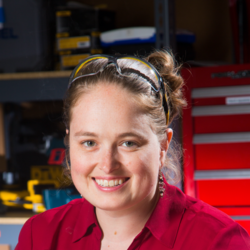T-4 Days to Humanity’s First Attempt to Deflect an Asteroid in Space
Day: Thursday 22 September
Time: 09:00 - 09:25 CEST
Location: Room Paris South, Level 3, Hall 7, Paris Convention Centre
Humanity’s first planetary defense mission, NASA’s Double Asteroid Redirection Test (DART), is now just over 100 hours from impacting a 160-meter asteroid in space and deflecting its orbit. The spacecraft is hurtling towards its target binary asteroid system at 22,000 km/hr, on a one-way trip collision course trajectory. The target, Dimorphos, is a small 160-meter moon of the larger asteroid Didymos. DART is now just 2.4 million kilometers from the target, about 10x the distance of our Moon from Earth. Although the primary Didymos asteroid came into view of the DRACO imager on DART about a month ago, the small binary moon is about to be resolved for the first time as the spacecraft enters its terminal phase. Major ground-based telescopes have now locked on to the target for continuous coverage, and space-based observatories, including the James Webb Space Telescope, are preparing their observational sequences to witness DART’s pending impact. And, the Italian Space Agency's LICIACube cubesat has just been deployed from DART and is preparing to image the encounter.
NASA's DART mission is designed to test a technology that could one day save our planet. Asteroids are swarming around the inner solar system and frequently impact Earth. If a large asteroid were to impact a populated area of the planet, the result could be devastating. The kinetic impact technique that DART will perform is the world's first planetary defense demonstration. Later in the decade, the European Space Agency's Hera mission will visit the Didymos system and characterize the DART impact.
The timing of the Late Breaking News session at the 73rd International Astronautical Congress is ideally situated to share with the community the latest information on NASA’s DART mission. One of the lead mission engineers, Dr. Betsy Congdon, will present the current health and status of the DART mission and the preparation plans for the upcoming encounter in just 4 days. Dr. Congdon will share the activities happening in the DART Mission Operations Center at the Johns Hopkins Applied Physics Lab, including the team's latest efforts to ensure mission success. With this session, the IAC community will have a head start in joining the rest of the world for this international endeavor.

